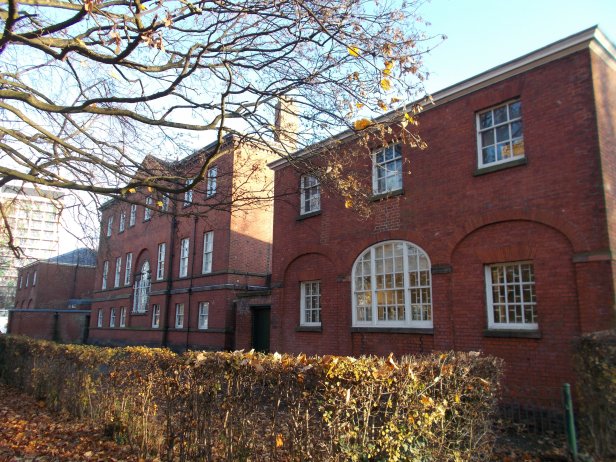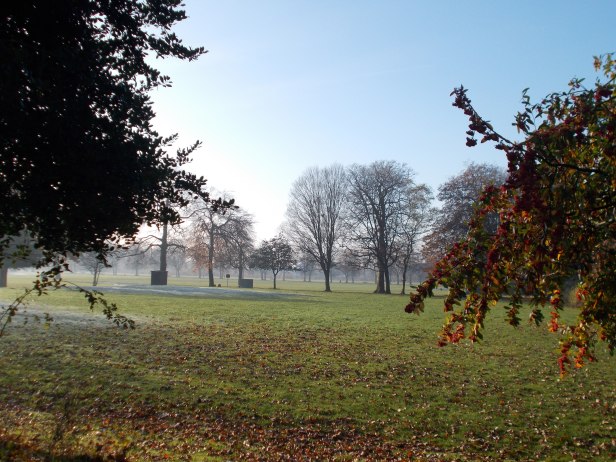Raphe Worsley bought the Platt estate in 1625. He’d made his money supplying yarn to local handloom weavers from Rusholme and selling the cloth they produced in Manchester. His son Charles was a high ranking officer in Oliver Cromwell’s army, raising a regiment in Manchester and later taking command of Cromwell’s own regiment. In 1655 Cromwell reorganized the country into ten districts, each with it’s own Vice Regent in charge. Charles became the Vice Regent for Lancashire, Cheshire and Staffordshire. The next year he had 100 alehouses closed down in Blackburn and is recorded as saying ‘we are catching up all lose and vile persons’. He died that same year aged 34 and was buried at Westminster Abbey.

Around a hundred years later Deborah Worsley inherited the estate and married John Lees, a wealthy textile merchant. John took her family name of Carill-Worsley and his son Thomas (from a previous marriage) was named as heir to the estate. The original timber frame Platt Hall was dismantled and a new brick hall was constructed in 1762-4 and is the one we see today.
It was designed by the famous York architect John Carr who also created the spectacular Lytham Hall. The new Platt Hall was a three story building with rows of what we now refer to as Georgian sash windows, all symmetrically laid out either side of the central grand entrance. His plans were modified by Timothy Lightoler, a former Lancashire wood carver and carpenter. The front of the house would look out onto formal gardens and beyond that was a classic parkland view: the wide stream of Platt Brook flowing by, cattle grazing in the distance and a Ha Ha ditch to stop them straying into the house gardens. Behind the hall a wooded area was created that included walks, mazes and open glades.
For the interior, Lightoler designed a circuit of interconnecting rooms for guests to move through on what is called a ‘parlour floor’. Starting in the common parlour, they would proceed to the grand dining room, then to the drawing room and bed chamber. Here they would dance, eat, play cards, listen to music, and discuss the furnishings and ornaments.

Today the dining room still survives and has been restored along with the central room on the first story. The grand staircase with its large Venetian window is another remnant from the time. Much of the original stucco plasterwork can still be seen and the wall colour scheme of grey, green and blue from John and Deborah’s time has been restored. Thomas inherited the estate in 1799 and many years later his clothes trunk was reacquired by the hall. This contained several of his everyday suits, coats, waist coasts and a pair of his shoes that still bear his name ‘Mr Worsley’. All are now on display, giving us a sense of what the gentry wore on a daily basis.
At the start of the 20th century the family were looking to dispose of the estate and house. It was sold to a builder who intended to knock down the hall and use its bricks to build hundreds of houses over all of the estate. This would also entail cutting down the large mature trees of the parklands. William Royle of Rusholme stepped forward to stop this happening, saying the parkland was a green lung of the city and that it should be bought by Manchester Council for all of the public to use. He worked tirelessly, organizing a campaign group, producing leaflets and writing letters to the local paper.

The strategy worked and in 1907 the council bought the estate for £59,000 with the intention of turning it into a public park. Unemployed labourers were brought in to landscape it, create flower beds and a boating lake. They also constructed a bowling green and tennis courts. William Royle’s work was commemorated in the 1920s by the creation of a large seat near one the the Wilmslow Road entrances, dedicated to him.
In the first world war the army used the park to recruit soldiers. There they would parade and also practice digging trenches. Returning injured men would learn to walk again on their artificial limbs in the Grangethorpe Fields area. In the Second World War bombs fell on Rusholme and in response long double air raid shelters were dug running along the lime avenue from Platt Lane. They were made of concrete and had mounds of earth put on top to reinforce them. Barrage balloons were moored in the park and anti aircraft guns set up, manned by the Home Guard. A steel structure known as ‘Bailey Bridge’ was built for soldiers to practice taking control of bridges.
The role of the hall changed over the years in Platt Fields Park. It had been originally reopened as a café in 1910, and became an art gallery in 1925 featuring 18th century furniture and costumes. In 1947 it became the Gallery of English Costume having recently acquired the enormous Cunnington Collection of Victorian dresses.

The park was still thriving in the 1970s with over 50 garden maintenance staff and a manager living onsite with his family. During the recessions of the 1980s and 1990s it began to struggle. Due to extensive job cuts only a few maintenance staff remained and these were shared between other parks. It was left unlocked at night and became subject to vandalism and general neglect. In 1997 the Friends of the Park group set about trying to tackle the problems. Working with the council, volunteers came in to do programmes of improvement including bulb planting and bird box making. Construction projects included new playgrounds and a sports zone with basket ball courts, a skate park and a BMX track. It still has many tranquil parts, such as the Shakespearean Garden (see the Nico Ditch page here), wide open grassed areas, mature trees and remnants of an old orchard. Large events began to take place, including the Manchester Mela. In 2010 the park celebrated its centenary and is back on track as a people’s park once again.
Platt Hall is now run by the Manchester Art Gallery group as the Gallery of Costume. It has 23,000 items in its collection and in 2006 was designated of National Importance by Department for Culture Media and Sport. Television and theater costume designers use its extensive collection for research. In 2009 a million pounds of building work was carried out by Manchester City Council to create a lecture theatre, workshop space and temporary exhibition gallery. You can visit Platt Hall today and enjoy both its historical features and its costume collection – all for free.
Site visited by A. and S. Bowden 2017
Opening times for Platt Hall and Gallery of Costume
Thursday and Friday 1-5pm
Saturday and Sunday 10am – 5pm
Platt Hall website see here
Access for Platt Fields park
Open access site in daylight hours
Friends of Platt Fields see here
Nearby, just a few minutes walk on foot the Dark Age mysterious Nico Ditch
References
Fabric of Society: A century of People and their Clothes 1770-1870, Jane Tozier and Sarah Levitt revised edtion 2010 Manchester Art Gallery and Manchester City Council (available from Platt Hall Gallery of Costume)
A Centenary Celebration of Platt Fields Park Manchester 1910-2010, Jonathan Schofield (editor), Browns CTP Oldham and Heritage Lottry Fund (available from Platt Hall Gallery of Costume)
http://manchesterartgallery.org/visit/gallery-of-costume/ (accessed 27/12/16)
http://www.plattfields.org/ (accessed 27/12/16)
Comments are closed.